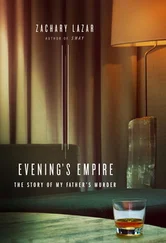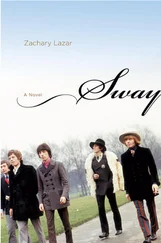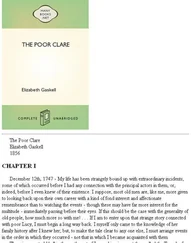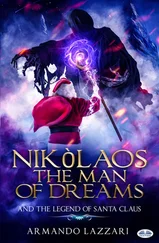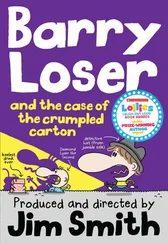It was around this time that things began to deteriorate with my father. I had told him about my meeting with Hugh — I had told him I was going to write Gila’s story after all. His name had appeared in the papers again. When I asked if he was worried, he told me no, he hadn’t done anything wrong. When I asked him how he felt about my writing Gila’s story, he was more enigmatic. He said, “You’re my daughter,” by which either he meant he supported me despite his qualms, or that my lack of discretion had left him speechless. Or perhaps my betrayal simply reminded him of his own.
I tell you everything, he had said that afternoon twenty-eight years ago when he’d told me about his affair with Gila. I tell you everything, that’s the rule. I think it’s an open question as to whether “telling everything” is the right thing to do. I know that ever since my father told me about Gila I have been insatiable in my need to tell everything, to expose myself and others, and I know by now that this has less to do with ethics than with the need itself.
I see now that this book is my idea of a Jewish story. It’s an unflattering story, negative in many ways. I suppose it begs the question, why tell such a story? Perhaps my father has simply gotten tired of my need to tell such stories.
I continued to think about Gila. Then, about a year after my visit with Hugh, I received an e-mail from David Bellen’s editor in Israel, Galit Levy.
This will interest you, she wrote. Hope you are well.
Part ThreeWorld of Our Fathers
11 I Pity the Poor Immigrant
by David Bellen
Books discussed in this essay:
Havana Nocturne: How the Mob Owned Cuba and Then Lost It to the Revolution, T. J. English, William Morrow, forthcoming, 2008.
The Money and the Power: The Making of Las Vegas and Its Hold on America, 1947–2000, Sally Denton and Roger Morris, Alfred A. Knopf, 2001.
The Man Who Invented Las Vegas, W. R. Wilkerson III, Ciro’s Books, 2000.
The Rise and Fall of the Jewish Gangster in America, Revised Edition, Albert Fried, Columbia University Press, 1993.
Little Man: Meyer Lansky and the Gangster Life, Robert Lacey, Little, Brown, 1991.
Meyer Lansky: Mogul of the Mob, Dennis Eisenberg, Uri Dan, and Eli Landau, Paddington Press, 1979.
The Last Testament of Lucky Luciano, Martin A. Gosch, Little, Brown, 1974.
Lansky, Hank Messick, G. P. Putnam’s Sons, 1971.
He saw the world through the gangster’s eye, an eye educated by long, arduous training, through the assumption of a whole system according to which mankind consists of two distinct species, wolves and lambs, predators and victims, winners and losers, deceivers and deceived — the elect and the rabble. It is the elected few, of course, who grasp the truth of this irreparable division, who possess the courage and energy to act on it. And what distinguishes gangsters, so-called, from the rest of the elect — capitalists, politicians, law-enforcers, and all the others who are successful in their putatively legitimate vocations — is that they, the gangsters, are open and aboveboard, and transparently honest with themselves, i.e., free of illusion, self-deception, and hypocrisy. So, by their own perverted logic, they, the gangsters, define themselves as the most virtuous of the elect.
Albert Fried,
The Rise and Fall of the Jewish Gangster
in America
PERVERTED LOGIC
In his study The Rise and Fall of the Jewish Gangster in America, Albert Fried reports that on October 24, 1918, the gangster Meyer Lansky, aged sixteen, “heard screams coming from an abandoned tenement house,” where two boys — Benjamin Siegel and Charlie Luciano (then known as Salvatore Lucania) — were fighting over a girl. “Without a second’s hesitation, Lansky leaped into the fray,” Fried writes, and hit Luciano with a crowbar. The police arrived and took all three boys to the Fifth Street station house — Meyer Lansky, Bugsy Siegel, Lucky Luciano. “It marked the beginning of one of the exceptional friendships in American crime,” Fried writes. His source for this, according to his own notes, is a 1971 biography-cum-pulp-novel called Lansky by a tabloid journalist named Hank Messick:
Sprawled on the floor was a small black-haired boy of about twelve [Siegel]. The fly on his blue knickers was open, and his swollen penis jutted through it impressively. A girl-woman lay beside him, her skirts high enough to expose the pink bloomers beneath. Towering over both of them was Salvatore Lucania who at age twenty-one had a bad reputation. Even as Lansky watched, Lucania kicked the woman in the side.
“You bitch,” he shouted.
And now Lansky realized the woman was laughing through her tears.
“I didn’t mean anything,” she spluttered. “He was so cute.”
The boy crawled to his feet. His face was a pale yellow, but a knife gleamed in his hand. He gathered himself into a crouch, ready to spring.
Lansky opened his toolbox and grasped a small crowbar. “Hold it,” he said.
Hank Messick doesn’t cite any source at all for this “re-creation,” written more than fifty years after the incident allegedly happened. Albert Fried takes this already fictionalized scene and adds his own variants — his Lansky leaps into the fray “without a second’s hesitation.” There is no “toolbox” containing the “small” crowbar. A poet primarily, I simply argue that this is how myths are created, and myths, no matter how imaginary, not only distort reality but impinge upon it. My copy of Lansky —a mass-market paperback containing an ad for Kent cigarettes with a “micronite filter”—bears on its cover the slogan, The book that tore the lid off the syndicate and forced Lansky out of Israel. Indeed, Messick’s book did help chase Lansky out of Israel, and its mythology helped to keep him for the rest of his life in a kind of personal diaspora of fantasies, rumors, wishes, fears. “A Jew has a slim chance in the world,” Lansky said when the Israeli Supreme Court denied his petition for citizenship. It’s a stunningly strange thing for a Jew in Israel to say — a Kafkaesque thing to say. It’s like saying you can never live anywhere and can never learn the reason why.
THE ELECT
Wolves and lambs, predators and victims, winners and losers, deceivers and deceived. It’s twenty-nine years after Lansky’s expulsion—2001, a year into the Second Intifada — and my son Eliav is wandering the streets of Tel Aviv, shifting from pile to pile, collecting bottles and cans for the deposit money so that he can buy heroin. He’s a native-born Israeli, a sabra, not a Jew in some land of exile. He narrows his field of vision to the space directly in front of his feet — the gleam of schist in the pavement, the garbage sacks translucent and swelling in the sunlight — and reaches his hand into the damp opening. At night, he listens to the muffled bass of car radios and the occasional siren or helicopter, alone in a dark room with a hot plate and a water jug and a mirror and a lamp. After a while, he starts to see cans and bottles everywhere — in mud puddles and clogged sewer grates, bleached pale amid the weeds of vacant lots. After a while, it becomes a kind of challenge or a game to see what he’s willing to touch with his bare hands.
LAND OF EXILE
In 2006, I go to the Lower East Side of New York, where you can visit a tenement on Orchard Street left partly in ruins, a relic of what was once the most densely populated neighborhood in the world. The entrance is dark even in the middle of the day, a small orange bulb illuminating the corridor of the ground floor, where a row of closed doors punctuates walls covered in brown tin, the tin itself coated with soot that gleams like oil, or like the walls of a mine. At the top of the staircase is an old toilet in a closet. The ravaged floors have been partly stripped back to reveal successive layers of linoleum in a garish array of cheap patterns. A bedroom, a kitchen, and a common room for each apartment, no running water — the building is bleakly candid about the commodification of its former occupants’ lives. To have had children in such cramped quarters would have inevitably meant sending them out onto the street as soon as they could walk.
Читать дальше

